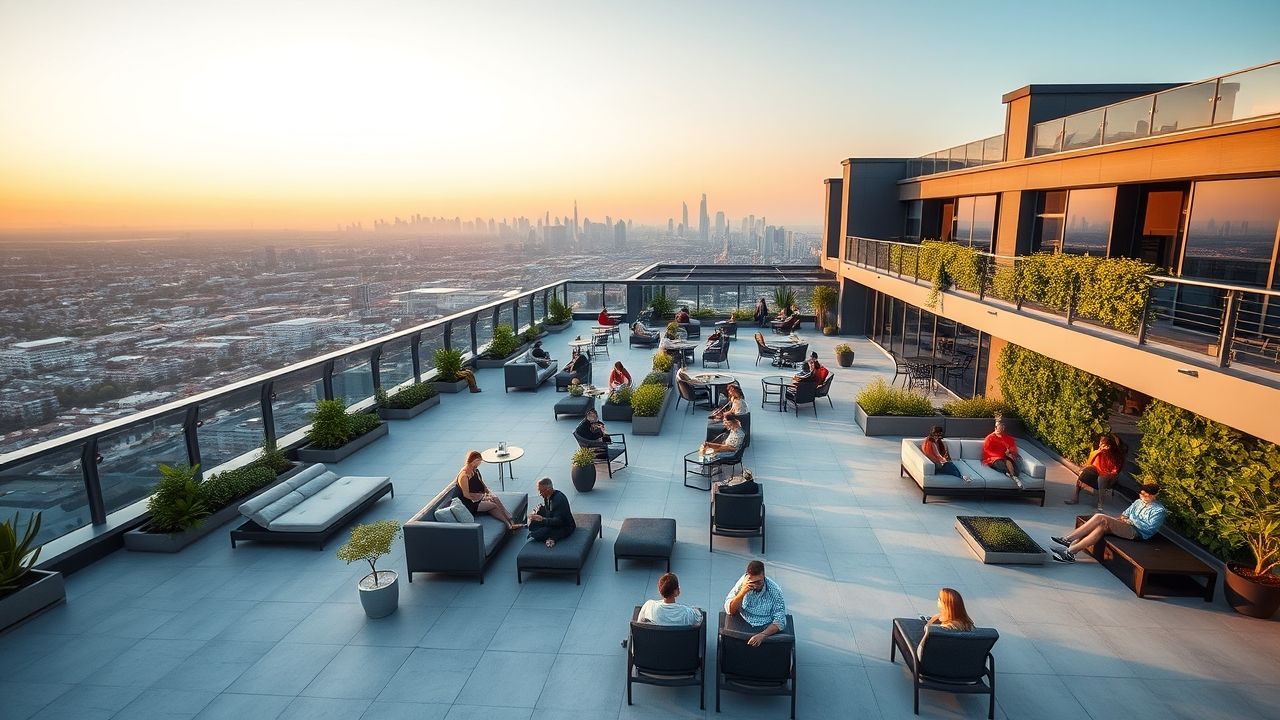In the vibrant tapestry of urban living, apartments stand as central threads, offering a unique blend of convenience, community, and contemporary design. From bustling city centers to serene suburban enclaves, these residential units are more than just places to live; they are ecosystems that reflect the evolving dynamics of our cities and the aspirations of their inhabitants. This deep dive explores the multifaceted world of apartments, drawing on insights from the ground level to provide a comprehensive understanding of what makes them such a compelling choice for millions.
Key Summary
- Evolving Appeal: Apartments are increasingly popular due to changing demographics, economic realities, and a desire for urban convenience.
- Community Focus: Modern apartment complexes foster strong community bonds through shared amenities and communal spaces.
- Local Market Insights: Understanding specific neighborhood nuances is crucial when seeking the ideal apartment.
- Future Trends: Sustainability, smart technology, and flexible living arrangements are shaping the next generation of apartment design.
Why This Story Matters
The story of apartments is, at its heart, the story of our cities. It reflects shifts in demographics, economic pressures, and a societal move towards more sustainable and connected living. As housing affordability becomes a pressing concern in many urban areas, and as younger generations prioritize experiences over vast spaces, apartments offer a practical and often desirable solution. Understanding this segment of the housing market is not just about real estate; it’s about comprehending the very fabric of modern urban life, its challenges, and its endless possibilities. For many, an apartment isn’t merely a dwelling but a gateway to a lifestyle, a community, and an access point to the opportunities that only a city can offer.
Main Developments & Context
The Shifting Landscape of Urban Living
The concept of apartments has undergone a significant transformation. Once seen purely as temporary stepping stones or options for those with limited means, they are now celebrated for their efficiency, their strategic locations, and the vibrant communities they often host. We’ve seen a marked increase in demand for multi-family dwellings, driven by factors like urbanization, delayed homeownership, and a preference for walkable neighborhoods. This surge has led to innovative architectural designs, with developers focusing not just on individual units but on creating comprehensive living environments.
Reporting from the heart of the community, I’ve seen firsthand how neighborhoods once dominated by single-family homes are now embracing thoughtfully designed apartment complexes. These new developments often blend seamlessly into the existing urban fabric, offering amenities that enhance the quality of life for residents and the surrounding area. From ground-floor retail spaces that invigorate street life to green spaces that invite community interaction, the focus has shifted towards integrated living solutions.
Beyond Four Walls: Amenities and Community
What truly sets modern apartments apart is the emphasis on shared amenities and community building. Gone are the days when an apartment simply meant a roof over your head. Today, residents expect more, and developers are delivering. The competition among complexes means an arms race of offerings designed to attract and retain tenants. These aren’t just luxuries; they’re integral to the apartment living experience.
- Fitness Centers: State-of-the-art gyms, yoga studios, and even climbing walls are becoming standard.
- Co-working Spaces: With the rise of remote work, dedicated co-working lounges provide a professional environment steps from home.
- Rooftop Terraces & Lounges: Offering stunning views and social hubs for residents to connect and relax.
- Pet Parks & Spas: Catering to the growing number of pet owners in urban environments.
- Concierge Services: Adding a layer of convenience, from package handling to event planning.
These shared spaces foster a sense of belonging, transforming what could be isolated living into a vibrant neighborhood within a building. It’s not uncommon to see residents organizing book clubs, fitness groups, or movie nights, all facilitated by the common areas within their apartment building.
Expert Analysis / Insider Perspectives
In my years living and observing this city, I’ve found that the real story of apartments isn’t just in the numbers, but in the lived experiences of the people who call them home. I’ve spoken with countless residents, property managers, and local business owners to understand the nuances of this dynamic market. One recurring theme is the unexpected sense of community that flourishes in these multi-unit dwellings.
“Living in an apartment has opened up a world of convenience I never knew I was missing. But beyond the easy commute and the great amenities, it’s the weekly yoga class with my neighbors or the impromptu get-togethers on the rooftop that truly make it feel like home,” shared Maria Rodriguez, a resident of a downtown apartment complex for three years. Her sentiment echoes what many are discovering: the value proposition of apartments extends far beyond square footage.
From a local business perspective, the influx of apartment residents has been a boon. Small cafes, boutique shops, and neighborhood services often thrive on the density that apartment buildings create. This symbiotic relationship between residents and local businesses further strengthens the urban ecosystem, making neighborhoods more vibrant and self-sufficient. I’ve seen once-quiet streets transform into bustling avenues, thanks to the energy brought by new apartment dwellers.
Common Misconceptions About Apartment Living
Despite their growing popularity, apartments still face several enduring misconceptions. One common belief is that apartment living equates to a lack of privacy or noisy neighbors. While density can indeed bring people closer, modern construction techniques and thoughtful design often mitigate these issues, offering soundproofing and private balconies. Many residents report a surprising level of tranquility within their units.
Another misconception is that apartments are only for young singles or childless couples. Reporting from the ground, I’ve encountered diverse households, including thriving families with children who appreciate the proximity to parks, schools, and urban amenities, and seniors looking to downsize and enjoy a more maintenance-free lifestyle. The versatility of apartment layouts and the variety of complexes available cater to almost every demographic.
Finally, there’s the idea that apartment living means sacrificing outdoor space. While a sprawling backyard might be off the table, many apartments compensate with beautiful communal gardens, private patios, balconies, or easy access to public parks. Rooftop gardens, in particular, have become sought-after features, offering green oases amidst the urban landscape.
Finding Your Ideal Apartment
The journey to finding the perfect apartment can be both exciting and daunting. With so many options available, a strategic approach is key. Consider not just the apartment itself, but the entire ecosystem it offers – the building, the amenities, and crucially, the neighborhood. Your ideal apartment will align with your lifestyle, budget, and long-term goals.
- Define Your Priorities: Before you begin your search, list what truly matters. Is it proximity to work, specific amenities, pet-friendliness, or budget? Prioritizing will help filter choices.
- Research Neighborhoods: Don’t just look at apartments; research the neighborhoods they’re in. Visit at different times of day, check out local shops, restaurants, and public transport options. The neighborhood is an extension of your home.
- Scrutinize the Lease Agreement: Understand all terms, including move-in costs, pet policies, maintenance responsibilities, and renewal clauses. Don’t be afraid to ask questions.
- Inspect Thoroughly: During tours, pay close attention to details. Check water pressure, test appliances, look for signs of dampness or pests, and assess natural light.
- Consider Long-Term Costs: Beyond rent, factor in utilities, parking fees, amenity fees, and potential increases over time.
An apartment isn’t just a place to sleep; it’s where you’ll build memories, host friends, and navigate daily life. Taking the time to find the right fit ensures a harmonious living experience.
The Future of Apartments: Sustainability and Smart Living
The trajectory for apartments points towards even greater integration of sustainability and technology. Green building practices are becoming standard, with features like energy-efficient appliances, solar panels, and water-saving fixtures. Many new developments are designed with an emphasis on reducing carbon footprints, offering electric vehicle charging stations and robust recycling programs.
Smart living is also redefining the apartment experience. From integrated smart home systems that control lighting, temperature, and security with a voice command, to package lockers managed by apps, technology is enhancing convenience and efficiency. The rise of co-living spaces, offering flexible lease terms and fully furnished units, also indicates a shift towards more adaptable and community-focused living arrangements, particularly appealing to digital nomads and those seeking flexible lifestyles.
Frequently Asked Questions
- What are the typical costs associated with apartments?
- Beyond rent, costs can include utilities (electricity, water, gas), security deposits, and sometimes pet fees, parking fees, or amenity access fees. Always clarify these during your lease negotiation.
- Is apartment living suitable for families?
- Yes, many apartments offer family-friendly layouts, amenities like playgrounds, and convenient access to schools and parks, making them a viable and often practical option for families seeking urban convenience.
- How has technology impacted apartments?
- Technology has revolutionized apartments through smart home systems, online rental platforms for easy searching, virtual tours, and even app-controlled building access, enhancing convenience and security for residents.
- What should I look for when touring an apartment?
- When touring, carefully check the water pressure, cell service reception, potential noise levels from neighbors or streets, and the general condition of appliances, fixtures, and common areas for signs of wear or disrepair.
- Are pet-friendly apartments common?
- An increasing number of apartment complexes are becoming pet-friendly, recognizing the importance of pets in residents’ lives. However, most require additional pet deposits, monthly pet rent, or have breed/weight restrictions.





